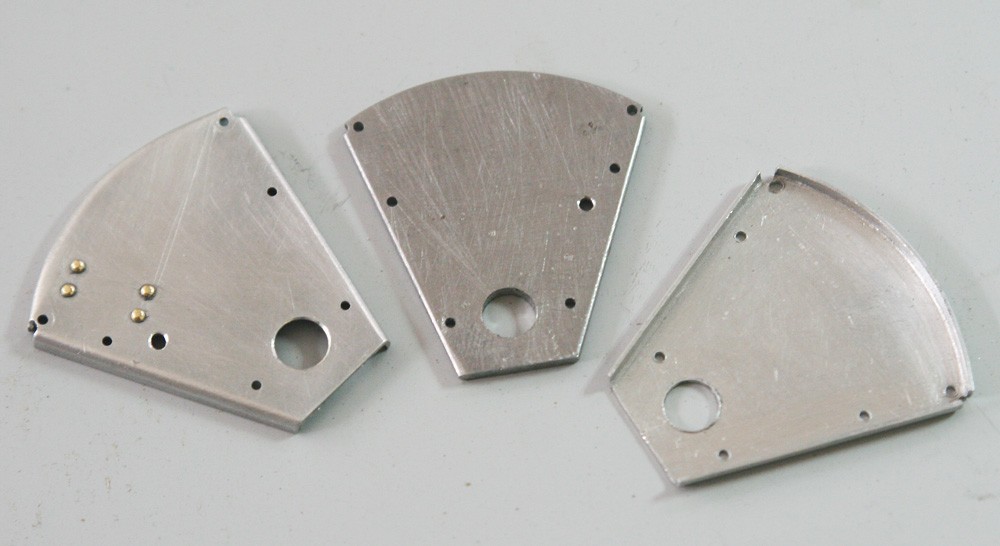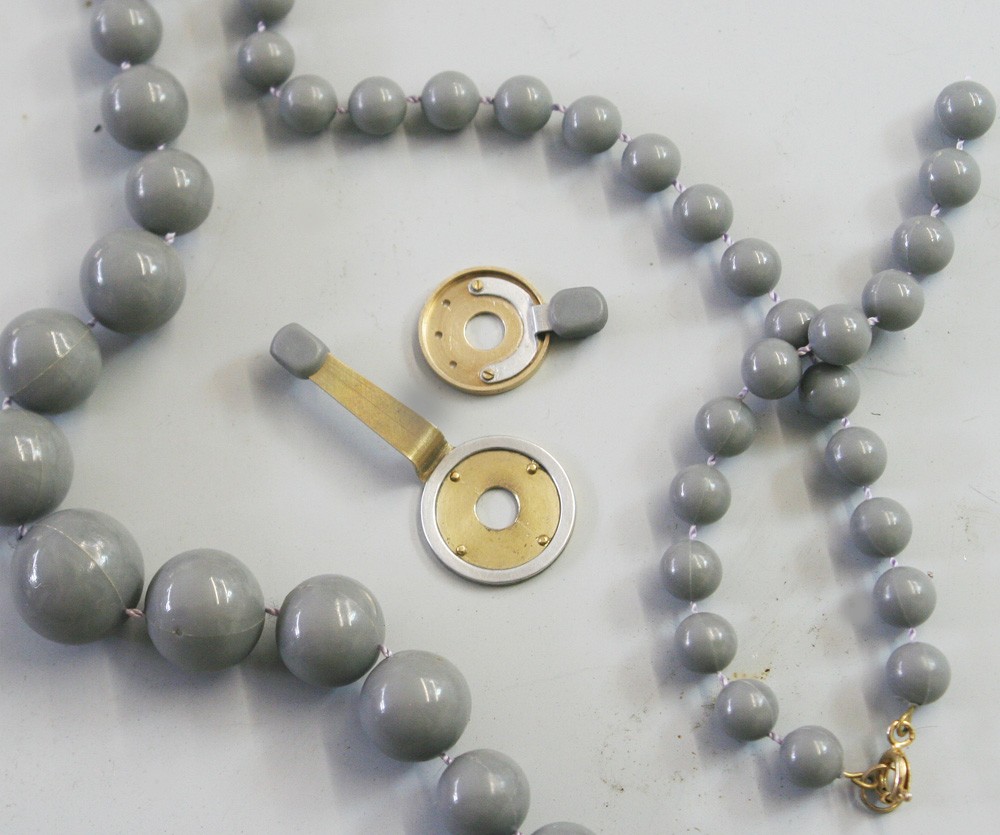The throttle quadrant
Thursday, 20th August, 2015
I used Supermarine drawings for the engine control quadrant, backed by illustrations in the Mk V Manual and the superb photographs in Paul Montforton’s book, cherry picking only those parts that are visible and replacing those that are not with various ad hoc simplifications to the innards of the thing. The assembly that appears complicated at first, under the scrutiny of a reductionist’s eye soon reveals itself as a succession of simple forms, several of which are no more than a series of stacked discs.
Work starts with the segment-shaped front and rear cover plates, which call for a simple steel pattern over which to form the flanges. If the gauge of steel is chosen to match the flange depth exactly, the job becomes easy, because once the flanges have been set, the excess material is simply filed back to the steel plate. I used 0.5 mm alloy sheet for this.
At its simplest the quadrant comprises the front and back plates, a cylindrical brass shaft onto which the several control levers pivot and a pair of arch-shaped guide plates at the top. All of these are seen in Photo 3, along with most of the other main components of the assembly that were variously cut and machined from brass and aluminium sheet and bar. I do not propose to describe this array in detail, since the pictures are largely self-explanatory, apart from saying that the offsets in the guide plates were achieved by some delicate milling.
A prominent external detail is the small cube-shaped chassis indicator switch that is mounted on the front, which I cut from a length of square styrene rod – an example of how I unashamedly mix materials to facilitate and simplify the task at hand. The little switch socket at the top is turned from brass hexagon and the switch itself from black styrene mounted on a steel pin.
Collectively, the various control knobs and handles are a make or break feature of the assembly, and two of them are tricky, being quasi-oval in shape. These started life as grey plastic beads from a disposable necklace, and since the beads grade in size it was possible to select almost exactly the correct diameter. Because improvisation is the essence of scratch building, I’ll elaborate:
First, I gripped the bead gently in a machine vice and milled a flat on it. By reversing its orientation in the jaws and supporting the flat on a narrow but parallel packing piece grounded on the vice bed, the facing surface could be milled reasonably accurately. Now, with the two flats held between the vice jaws the parallel sides of the oval are milled, one after the other. The final stage is the most delicate: the piece has to be bisected vertically with a razor saw followed by the filing of a shallow rebate to accommodate the metal lever shaft. It is not easy but possible, and superglue does the rest. I have to emphasise that this sort of rather sloppy approach is certainly not model engineering – more like primitive sculpture with the help of a machine tool!
From start to finish, the control quadrant occupied about a week’s work and involved more than ninety parts, including screws, rivets, etc. But the reward came with the assembly of those tiny parts by means even tinier nuts, bolts and spacers. The end result looked so good in bare metal it was a wrench to take it all apart again to paint it!







